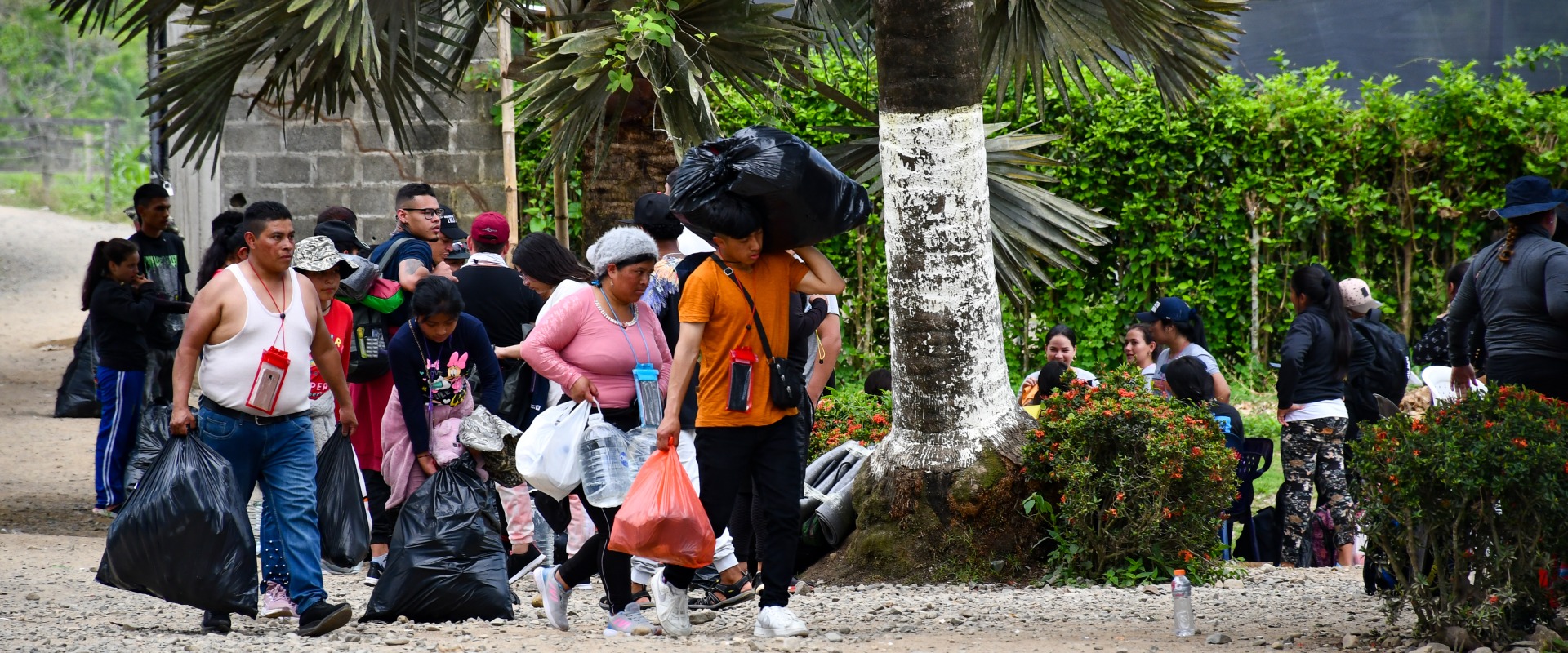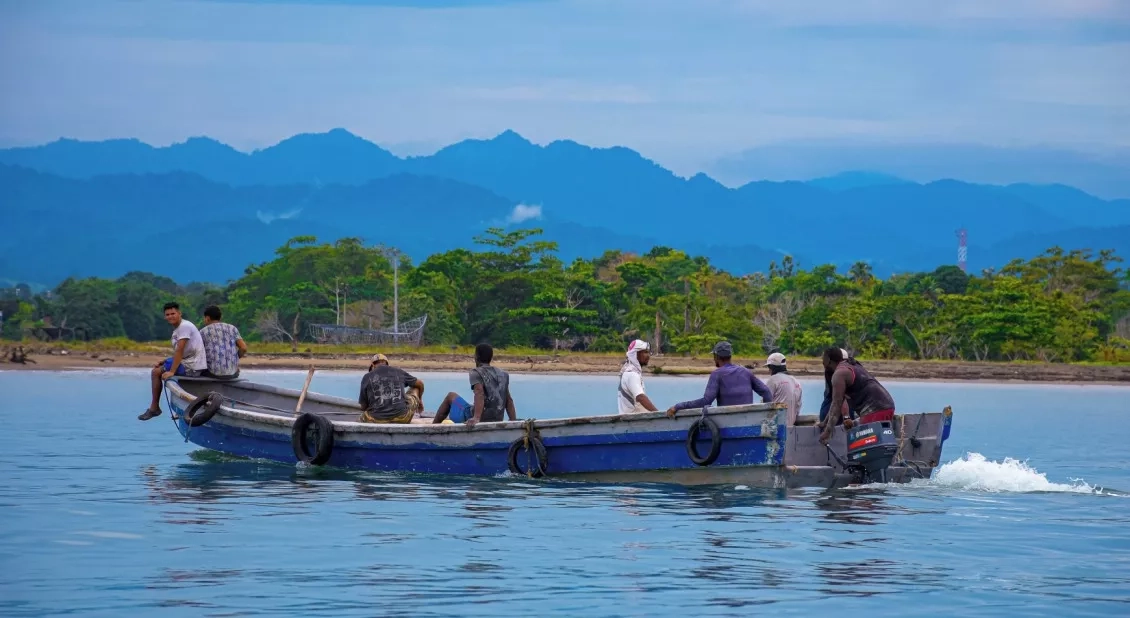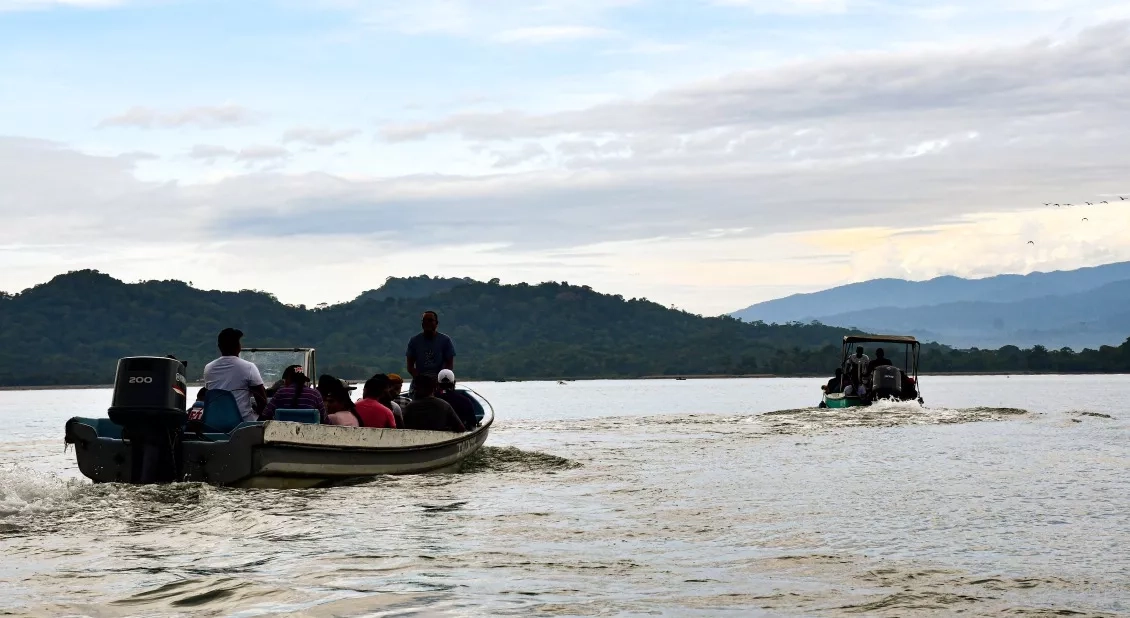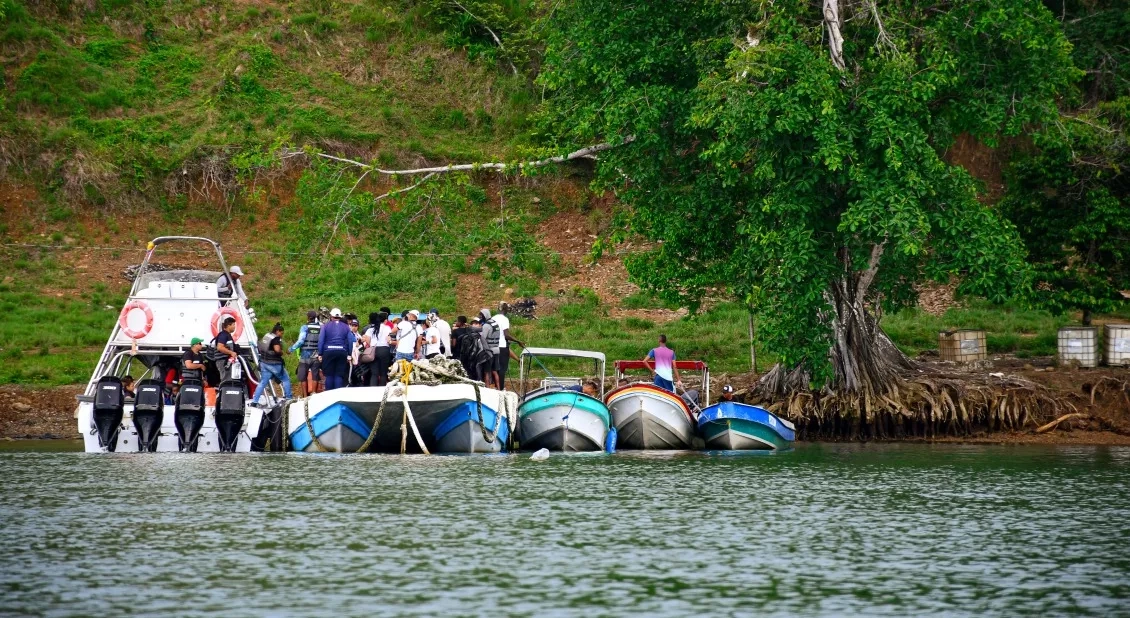
Gaza Crisis Appeal

Action Against Hunger recently launched a lifesaving program in one of the world’s most perilous jungles. The Darién Gap, which lies between Colombia and Panama, has made headlines for its brutal conditions, and many people who travel through it die during the journey. Risks include hunger, dehydration, injuries, illnesses, robberies, and rape.
The Darién Gap has been called one of the world’s most dangerous migrant routes. Still, hundreds of thousands of migrants make the trek every year. In fact, migration numbers are climbing drastically. Hundreds of thousands of people from Venezuela, Colombia, Haiti, China, and other parts of the globe cross through Panama with one dream in mind—a better life for their families. Many young people, including children, venture into nearly 70 miles of uncharted wilderness, all in the hopes of finding a life without poverty, conflict, or instability.

Each year, more and more migrants flee their homes and travel northward. In 2022, nearly 250,000 people traveled through the Darién Gap. According to data from Panama’s National Immigration Service, from January to October 2023, more than 480,000 people crossed through the Darién jungle. The numbers have risen 87% since 2019 and 60% since last summer. Lack of opportunities in host countries and economic hardship are largely driving the migration.
In recent weeks, peak numbers of 3,000 people per day have been recorded in the Darién Gap. As migrant numbers reach record highs, Action Against Hunger’s program in the Darién Gap supports the most vulnerable migrants. Mobile teams provide maternal and child healthcare through expert medical and nutrition staff.
“We’re focusing on supporting the most vulnerable migrants who cross the Darién Gap, which includes pregnant and lactating mothers, as well as children under the age of 10,” says John Orlando, Action Against Hunger’s Country Director for Colombia. “We’re prioritizing healthcare for pregnant women, new mothers, and young children. Many travelers will continue their journey north from the Darién jungle, and our mission is to ensure their health and wellbeing.”
Action Against Hunger began responding throughout the region in September, with staff focusing on the highest-risk individuals. To date, the mobile team has provided more than 3,236 primary health consultations, 266 supplements to prevent malnutrition, and ten treatments for malnourished women and children.
“We have identified children with chronic malnutrition, stunted children, and children with micronutrient deficiencies or ‘hidden hunger,’” says Angélica, one of the mobile team doctors. Doctors are also supporting pregnant mothers and addressing respiratory infections and skin problems in many patients.

“We have seen children with respiratory diseases, which creates an additional risk for them to cross the jungle in these conditions,” she says. “The humidity and physical demands will undoubtedly worsen their health conditions.”
Marcela, a 26-year-old migrant mother from Venezuela, faced unimaginable perils during her journey. Still, she and her husband chose to cross with their two children to find food, income, and opportunities.
“Everyone judges you when they see you with the children, they say you are irresponsible,” she says. “But things are very difficult at home. We didn’t have enough to feed our children for many days, and we were forced to migrate.”

Marcela said that with little money and resources, she and her husband had to make difficult decisions under the pressure of poverty. She knew the journey would be difficult, but they still decided to go together. If one had stayed behind, they would likely have been forced to choose between buying food or paying rent.
“We thought about it a lot and we are both going to get the children out of it,” she says. “We have to have faith and keep going.”
More about Action Against Hunger’s Programs in the Darién Region
In the Darién Region, in the transit areas of Capurganá, Acandí, Turbo, and Necoclí, Action Against Hunger works closely with the Hebrew Immigrant Aid Society (HIAS) and in coordination with the Attention and Orientation Points (PAO), the International Organization for Migration (IOM), Migration Colombia, the Interagency Group on Mixed Migration Flows (GIFMM), and the Colombian Red Cross. In the department of Chocó, Action Against Hunger works in partnership with the Colombian Health Secretariat, the Mayor’s Office, and local organizations. The work is supported by the Swedish International Development Cooperation Agency (SIDA). To learn more, read Action Against Hunger’s recent report here.
Join our community of supporters passionate about ending world hunger.